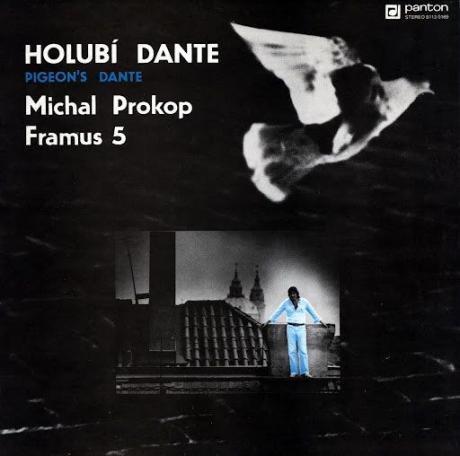Rockové klávesy - Robert Moog Part 1

Greetings, readers! Welcome to another edition of Rock Keyboards! This month I wanted to speak a little about synth pioneer, Robert Moog. This will be a two-part article; the first focusing on the history and story of the great synth genius, and the second investigating the most important innovations and instruments Moog created. Moog was the inventor of the first commercially available synthesizer in 1964 and widely considered, along with Don Buchla, to be one of the most important people in the history of electronic synthesizers. The BBC has described him as a “pioneer of synthesized sound”.
Early years in New York City
Moog was born in the New York City borough of Queens. He was always fascinated by electronics and while a student at The Bronx High School of Science, built his first theremin. Moog’s father was an engineer working for the energy company, Consolidated Edison. Young Robert spent a lot
of time with his father in these early years, where he learned many of the skills he would use in the design of his synths. After high school, Moog obtained a B.S degree in physics from Queens College, a master’s degree in electrical engineering from Columbia and finally a PHD in engineering physics from Cornell university in 1965. in 1953 he founded his first company, RA Moog, which sold theremins and theremin kits by mail.
Moog Music and the Moog Synthesizer
At Cornell, Moog began work on his first synthesizer modules with a gentleman named Herb Deutsch. At the time, synthesizers were extremely large and expensive. Moog’s dream was to create a smaller synthesizer that would be less expensive and confusing than the huge modular systems. As opposed to earlier synths like the RCA Synthesizer that had to be programmed with punch cards and cost as much as a nice home, Moog’s first synth had several smaller modules that were connected with patch cables and was about 10,000 US dollars (still pretty pricey). The Moog Synthesizer, as it was called, was released in 1964 and had a keyboard that could be connected to control the instrument and an envelope that controlled the attack and release of the notes. In 1970, Moog released an even more portable model, the now very famous, Minimoog, which is considered by many to be the most important synthesizer of all time. The Minimoog was quite small compared to the other synths and required no patching because all the components were already patched inside the unit. The synth also featured a pitch wheel and three oscillators that were hard to keep in tune but created the fat chorused sound that everyone came to love. Many prominent musicians used the instrument extensively. Herbie Hancock, Rick Wakeman, and Keith Emerson all used the Minimoog in their seminal recordings.
Financial problems and later years
Because Moog only patented his Ladder Filter concept, which we will talk about in part 2, and not features like modularity and envelope control, many other rival companies like Roland, Arp, and Emu sprang up with cheaper synths as time went on. These gave great competition to Moog’s company which was forced to move to Buffalo, New York during the difficult financial recession of the early to mid70s. In 1978 he formed the company Big Briar and continued to work on his instruments. He also had a prominent position at Kurzweil Music Systems. Robert Moog unfortunately died of a brain tumor in 2005, but his spirit lives on in his incredible instruments which we will investigate in part 2 next month.
Slovníček frází a hudebního žargonu
Milé klávesačky a klávesáci, milí čtenáři, dnes to bude o legendě syntezátorového zvuku, o Robertu Moogovi. Protože to je velké téma, bude se mu Brian věnovat hned ve dvou vydáních. Z jeho prvního dílu jsem vybral následujících sedm výrazů a spojení, doufám, že pro vás relevantních a zajímavých, a že vás bude čtení bavit!
Pioneer: Slovo nám zní povědomě, v češtině existuje v podobě pionýr. Mohli bychom se tedy domnívat, že byl výraz převzat z angličtiny, ale kdepak. Svůj původ má ve francouzském výrazu „pionnier“ (nebo „paonnier“). Odtud se dostal také do angličtiny. Označován tak byl voják pěšák, který vyhledává pro svou jednotku cestu, dneska tak označujeme ženisty. A tak se vyvinul přenesený význam pionýr = průkopník, inovátor.
Investigating: Všichni znají zkratku FBI. Možná už ne každý by uměl uvést plný název této organizace, tedy Federal Bureau of Investigation. Správně česky to je Federální úřad pro vyšetřování. Sloveso „investigate“ znamená vyšetřovat, ale také zkoumat. V článku tak Brian trochu vzletným jazykem říká, že v druhém díle prozkoumá Moogovy nejzásadnější inovace a nástroje.
Borough: To slovíčko zní britsky, ale objevuje se i v americké angličtině. Znamená administrativní vymezení území, městskou část, přeneseně čtvrť. V New Yorku se tak označují velké části města, které byly dříve samostatnými městy a i po spojení do jednoho velkoměsta mají částečně svou autonomii. New York se skládá z pěti „boroughs“, z Bronxu, Brooklynu, Manhatnu, Queens a Staten Islandu.
Opposed: Sloveso oppose znamená oponovat. Jako přídavné jméno bychom ho přeložili jako vzdorující nebo protichůdný. Ale v článku bychom se mohli snížit i k obyčejnému „na rozdíl“. Věta „As opposed to earlier synths...“ by zněla: „Na rozdíl od starších syntezátorů...“
Punch cards: Toto slovo najdete v předchozí větě a mladší ročníky možná pobavím, protože se s takovou věcí v životě už nesetkali. Představte si, že dříve byly počítače, do kterých se programy nestahovaly z internetu, nevkládaly se na disketách, cédéčkách ani na USB discích, ale na děrných štítcích! Fakt, normálně na kartičkách, ve kterých byly prosekané na různých místech malé dírky.
Pricey: Slovíčko price zná i každý neangličtinář. A jak vidno, angličtina je velmi flexibilní jazyk. V angličtině můžete k některým podstatným jménům jednoduše přidat -y a dostanete výraz, který budete muset v češtině buď opsat, nebo přeložit jiným slovem. Třeba tady price = cena, pricy ale už musíme opsat jako vyšší cena, nebo prostě přeložit jako drahé.
Were hard to keep in tune: Tato fráze obsahuje vcelku běžná slovíčka, ale kdybychom ji chtěli přeložit doslovně, trochu by to skřípalo. Byly tvrdé k udržení v ladění nezní úplně elegantně. Hard neznamená jen tvrdý, ale také obtížný, přeneseně těžký. Takže trochu lépe bychom řekli „... dost těžko držely ladění...“, nebo dokonce „... moc neladily...“.


